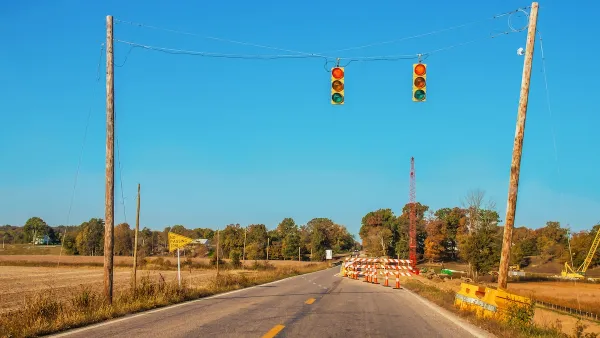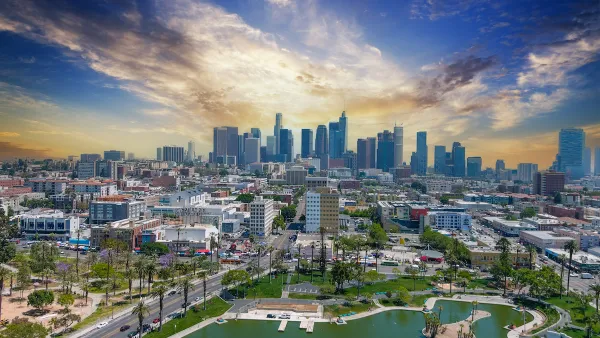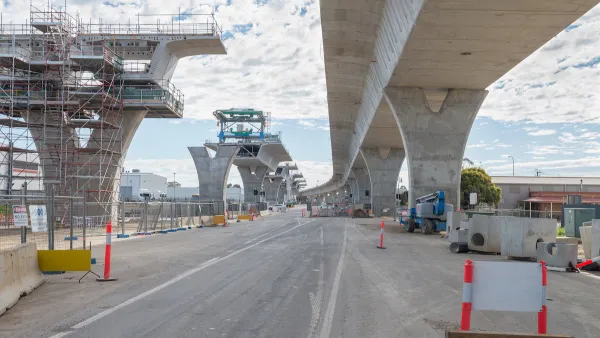New research from the Brookings Institution claims that Los Angeles has the second smallest carbon footprint of big American cities -- a finding that contains a few caveats.
"According to the Brookings Institution, a prestigious Washington think tank, the Los Angeles metropolitan area emits less planet-warming carbon per capita than any big city except Honolulu, at least by some criteria."
"In a report to be released today on energy use in residential buildings and highway transportation, Brookings ranks Los Angeles as greener than New York, with its network of subways; more virtuous than Portland, Ore., with its smartgrowth greenbelt, and, yes, even better than San Francisco, its eco-vain rival."
"'We are not at all surprised,' said Nancy Sutley, L.A.'s deputy mayor for energy and environment, citing the city's 'moderate climate, with fewer heating and air-conditioning days, and its relatively newer, less drafty housing stock' than in many parts of the U.S."
"Moreover, she added, 'sprawl is a lot worse in other parts of the U.S.'"
"But before the boasting starts, some words of caution: The calculations did not account for the fact that half the city's electricity comes from coal-fired power plants. Instead, Brookings used a state-wide average that included the hydroelectric and nuclear plants in Northern California."
"Omitted from the data are emissions from industries and commercial buildings, and from local roads apart from federal highways."
FULL STORY: Los Angeles' carbon footprint is a light one -- sort of

National Parks Layoffs Will Cause Communities to Lose Billions
Thousands of essential park workers were laid off this week, just before the busy spring break season.

Retro-silient?: America’s First “Eco-burb,” The Woodlands Turns 50
A master-planned community north of Houston offers lessons on green infrastructure and resilient design, but falls short of its founder’s lofty affordability and walkability goals.

Delivering for America Plan Will Downgrade Mail Service in at Least 49.5 Percent of Zip Codes
Republican and Democrat lawmakers criticize the plan for its disproportionate negative impact on rural communities.

Test News Post 1
This is a summary

Test News Headline 46
Test for the image on the front page.

Balancing Bombs and Butterflies: How the National Guard Protects a Rare Species
The National Guard at Fort Indiantown Gap uses GIS technology and land management strategies to balance military training with conservation efforts, ensuring the survival of the rare eastern regal fritillary butterfly.
Urban Design for Planners 1: Software Tools
This six-course series explores essential urban design concepts using open source software and equips planners with the tools they need to participate fully in the urban design process.
Planning for Universal Design
Learn the tools for implementing Universal Design in planning regulations.
EMC Planning Group, Inc.
Planetizen
Planetizen
Mpact (formerly Rail~Volution)
Great Falls Development Authority, Inc.
HUDs Office of Policy Development and Research
NYU Wagner Graduate School of Public Service





























